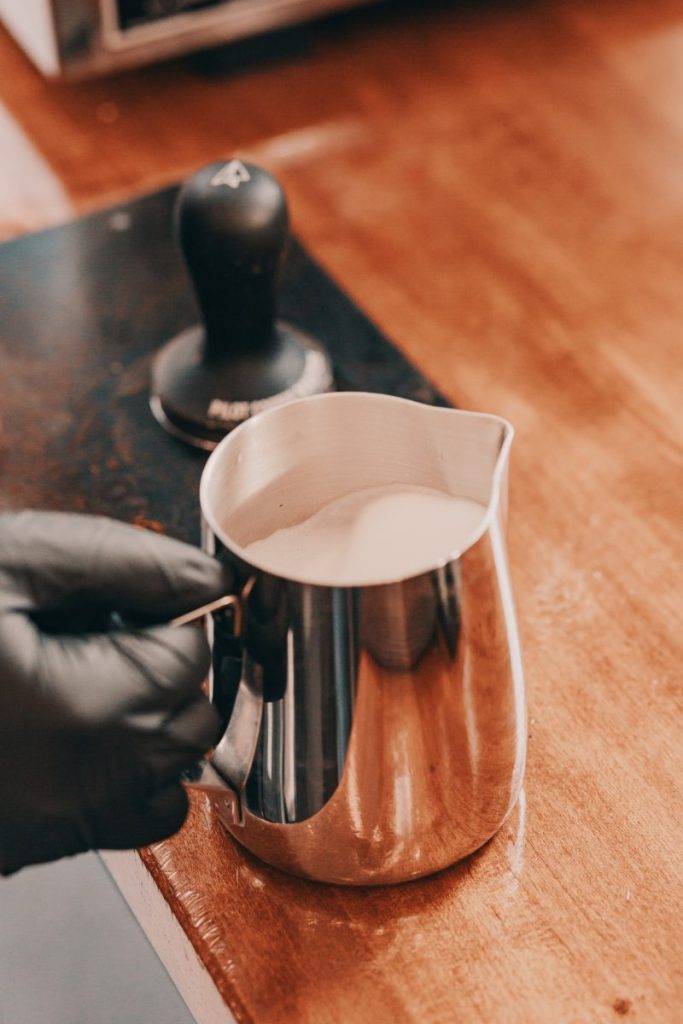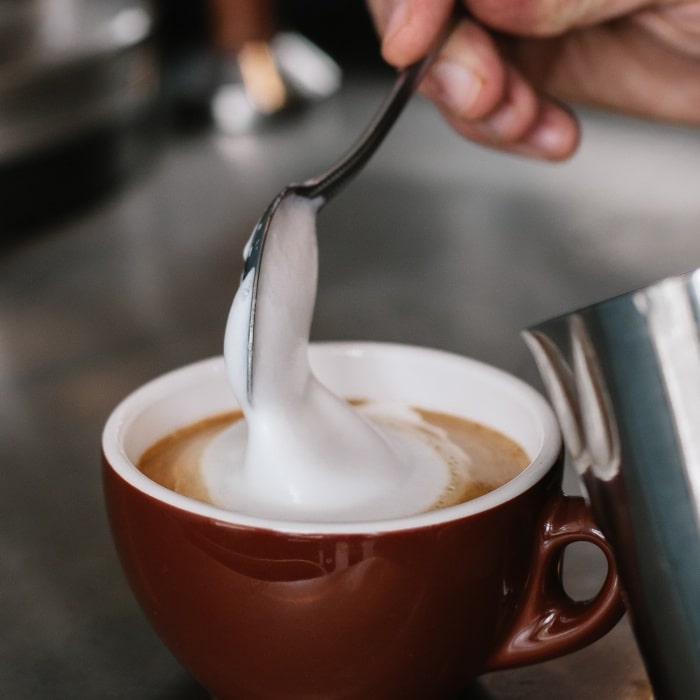Steaming and frothing milk is a fundamental skill every coffee barista must learn. It takes time to learn, and mistakes happen along the way. The steamed milk and foam prepare flat whites, cafe lattes, and cafe macchiato. Let us learn the difference between wet and dry cappuccinos.
Steamed and frothed milk

It takes trial and error to learn to steam and froth milk. However, brewing becomes easy once you understand the logic of the milk components. Milk has three components that change to water vapor through the steam wand.

The composition of milk
Proteins – about 3% of milk is proteins. Protein in milk is divided into whey and casein. Casein protein is about 75% of the milk weight. When milk is steamed, its molecules are suspended in the water-soluble whey protein; hot vapor forces into casein molecules and reconnects around air bubbles.
The trapped milk bubbles form foam to make the milk thick and creamy. The casein proteins hold air and contribute hugely to the curdling of milk. Casein proteins no longer hold together at 180 Farads or 82 degrees Celsius, making the milk scald.
Fats – milk contains about 3.5% butterfat. Fat contains about 400 types of fatty acids and glycerol in one molecule. Heating the milk weakens the bond between fat molecules and makes them move around. When fat molecules distribute throughout the milk, milk achieves a milk/silky taste and forms a firm foam.
Baristas barely use whole milk, but the 2% skim milk has enough fat to make the texture and foam. Studies from the University of California show that milk with high fat stabilizes better at temperatures below room temperature, and milk with low-fat content is much more stable at high temperatures.
Carbohydrates – carbohydrates in milk are called lactose and constitute 5% of milk volume. Lactose is made of glucose and galactose sugars combined. Frothing and steaming milk does not affect lactose. However, over-steaming milk leads to a Maillard reaction. As a result, lactose reacts with protein molecules to form a brown and burnt taste.
The primary thing here is understanding how various milk components react to heat. So, first, ensure you achieve thick, smooth-steamed milk with foam. From there, you will make various coffee beverages, including wet and dry cappuccinos.
Wet and dry cappuccinos

Italians invented the cappuccino in the 16th century. It was named after Capuchin Monks, who wore light brown garments with pointed hoods. Back then, milk was mixed with strong coffee to make cappuccino.
Today, cappuccino is made of two shots of espresso. This bitter and robust blend of coffee is mixed with smooth, sweet-steamed foam milk that floats above it. So use two espresso shots, the barista at the top with an equal amount of steamed milk and an equal amount of foam at the top.
A wet cappuccino comprises more steamed milk and a thin layer of foam. Milk is the canvas for latte art with a preferred thicker layer of foam.

Dry cappuccino uses less steamed milk and more foam. However, the amount of foam added to cappuccino does not affect the taste and enjoyment we get from it. The foam will give a creamy sensation in your mouth. The bursting of the bubbles triggers flavor through the sense of smell. You have a choice: enjoy the dry cappuccinos or the wet cappuccinos.

Bone dry vs. Super wet
Although ‘wet’ and ‘dry’ are where most people stop their creation of Cappuccino, others like pushing the limits of cappuccino milk ratios.
- Bone Dry— This usually means you want zero steamed milk; just a big dollop of foam right on top. It will be like a macchiato, but with a little more foam. Super Wet — Usually means you want zero foam and all the vaporized milk.
- Super Wet— Typically, you want zero foam and all the milk that is steamed. This extra-liquid beverage looks more like a Cappuccino than a Flat White.
Wrapping up
You can prepare a cappuccino with lots of steamed milk and a significant layer of foam or one with a thin layer. Then, just the aroma and the perfect blend of flavors from your cup of cappuccino.

Editorial Staff
The editorial staff at Crazy Coffee Crave is a team of coffee enthusiasts & Baristas who enjoy the one thing we all think about as soon as we get up in the morning. Trusted by thousands of readers worldwide.

